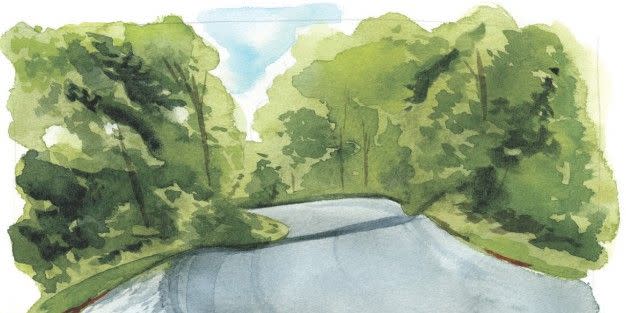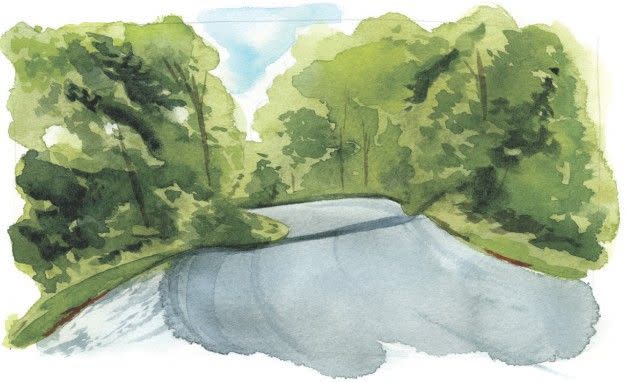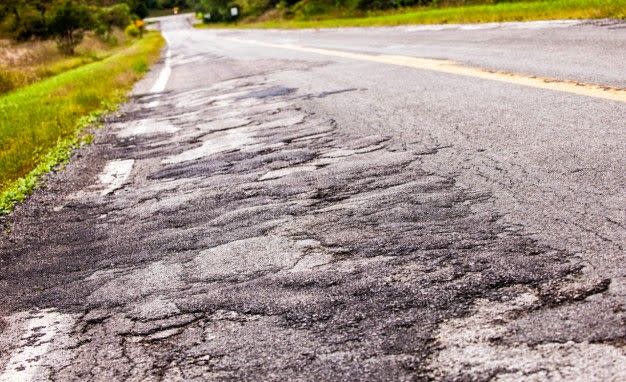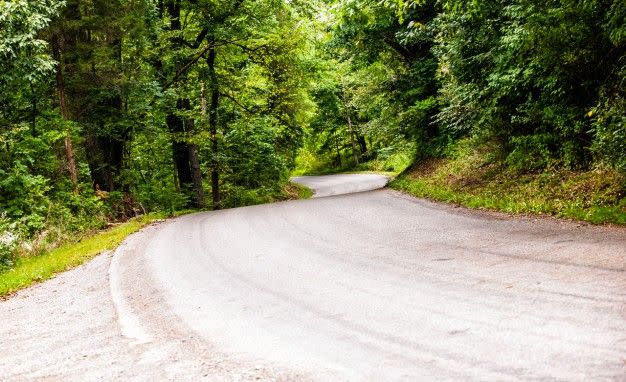2015 10Best Cars: Secrets of Our Test Route Revealed


From the January 2015 issue of Car and Driver
If 10Best testing is like any form of motorsports, it’s like rallying. No, we don’t time our laps around our 13.5-mile loop because we are not entirely insane. And unlike rallying, we don’t have co-drivers barking coded messages at us about what dangers lie beyond the next turn. Yet a full-tilt pace around our course (not that anyone attempts it) would touch triple digits in several places. And, as in rallying, we travel roads maintained by taxpayer-funded entities and that are in every conceivable way imperfect—actually, perfectly imperfect for revealing both the talents and shortcomings of any production car. Here are some staples of what our route holds and what we learn from them:
The Esses and Magnum XL-200
At just nine-tenths of a mile, this nine-corner sequence is the reason our 10Best loop is here. With the exception of two sequential corners, this is a busy bit of road, with alternating left- and right-hand curves and the occasional sprinting terrapin to avoid. By quickly loading and unloading one side of the car, this section reveals more about transient response than does any other patch of asphalt. At least four pucker-inducing blind rises give a car’s suspension a good workout. Unloading the front tires over these whoops, these backwoods Flugplatzes, reveals peculiarities in steering feel and effort. Treetops and telephone poles give a hint of where the road is headed beyond the precipice, so it’s best to look up.
Sammy Hagar Cool-Down Section
This segment is the straightest, flattest, and smoothest stretch on our loop. It also carries the most civilian traffic. All is not lost, though. Nothing allows you to concentrate more on wind and tire noise, engine sound and vibration, and on-center steering feel than following a ’94 Ford Taurus wagon with a “WWJD” sticker on the bumper and a tuft of blue hair at the controls. Indeed, what would Jesus drive?
On Driving in the Rain
10Best testing is a rigidly scientific, precision undertaking, at least until Mother Nature blows us a wet one. Occasionally, we are forced to drive in mixed or downright crappy conditions, and oncoming traffic requires that we always observe centerlines, even when it means plowing through rainbow sheens of percolating oil. Heavy rain turns some sections of the loop, particularly near our base camp, into a series of fast-flowing creeks, and our unpaved parking lot becomes caramel pudding. It’s really fun in the same way that serving in the Albanian army is fun.

On the Rough Stuff
A smooth, flat road reveals little about a vehicle’s ride. The Torturous Road section of the loop, however, exposes the demons in the suspension. It is patched together about as well as Iraq, and some of the larger pots are deep enough to consume a low-profile tire. The less severe stuff provides a perfect test venue, and the best performers isolate the cabin and its occupants with only as much suspension travel as needed. The worst performers transmit every bump, or magnify them with reverberations through their structures.

On Going Both Ways
While some editors prefer a clockwise circulation, some prefer counterclockwise. And others may deviate from the route entirely. However, the most important thing during 10Best testing is to eliminate variables. For example, if you drive the Mazda 6 in one direction, you’d better lap the Honda Accord the same way. If you polished off a coconut doughnut in the Porsche Cayman, don’t switch to Red Hots for the Chevy Corvette. Corner intensity depends on the direction of travel. An extreme example is the southernmost bend on the loop’s western edge, which we’ve nicknamed “Oh, Rouge.” Going north, the left-hander is fairly wide and followed by a short, suspension-compressing hill. Coming the other way, the suspension fully compresses at the bottom of the hill before a tighter-radius right.
The 2014 Repaving Project
The southeast corner of our loop was “resurfaced” just before 10Best week. In Michigan-speak, that means it got a low-cost sealcoating of loose gravel spread on top of tar, which made it seem as if we were driving in Simba’s litter box. Once the extra stones were swept away by 15 or 20 passes, grip in this area significantly improved compared with previous years, when the road was merely falling apart. Fortunately, none of our test cars was swept off the edge during our early road-clearing laps.

2015 10Best: These Are the Absolute Best Cars You Can Buy Today
2015 Chevrolet Corvette 8-speed Automatic Tested: More Gears, Same C7 Goodness
Porsche Cayman Pricing, News, Reviews, Photos, Specs, and More
2015 10BEST CARS: RETURN TO OVERVIEW
You Might Also Like

 Yahoo Autos
Yahoo Autos 